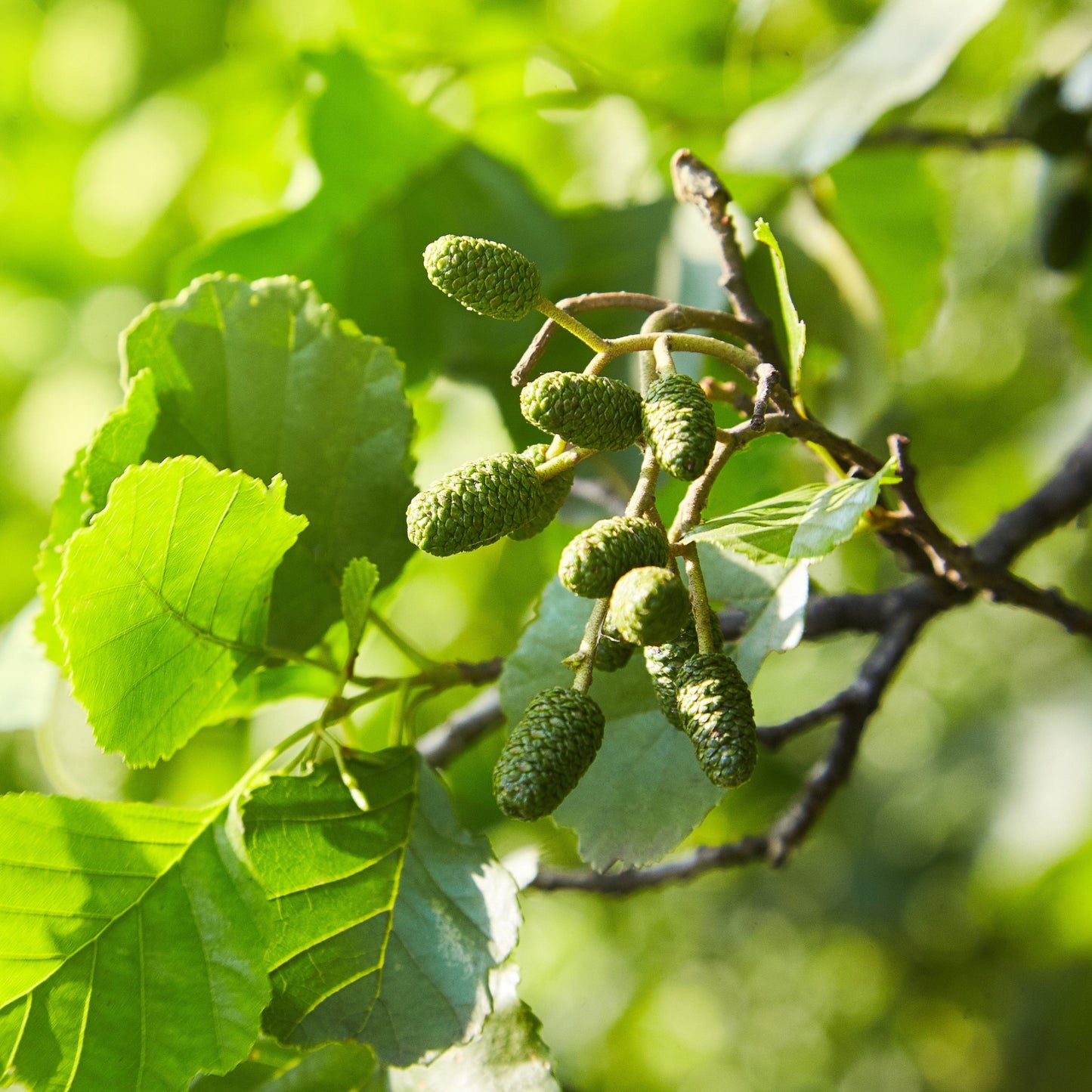Habitat Aid Ltd
Common Alder (Alnus glutinosa)
Common Alder (Alnus glutinosa)
Prices include VAT (when applicable) and delivery to mainland UK.
Couldn't load pickup availability
Common Alder (Alnus glutinosa)
Alder has colourful yellow catkins in spring and cones in the winter, which attract birds, including the siskin, redpoll and goldfinch. Its bark is fissured and dark - hence one of its alternative names, "Black Alder", as opposed to the European "Grey alder" (Alnus incana), introduced to the UK around 200 years ago. It needs moist soil of any type other than acid peats, and is commonly found in wet woods, fens, and streamsides - so numbers have fallen due to drainage and reclamation schemes. As John Evelyn put it in 1664, "(Alder) is of all other the most faithful lover of watery and boggy places."
Interestingly, alders are nitrogen fixing - or more accurately, they have a symbiotic relationship with the bacterium Frankia alni, which converts airborn nitrogen into soil based nitrates.
Italian Alders or the Grey Alder, more tolerant of drier conditions but non-native, are now often planted instead of our own Common Alder.
We include Black alder trees in our collection of trees for wet ground.
Uses
The Common alder's quick growth and the fact it carries its leaves late make it a good screen tree, and helpful in many environments. It was traditionally coppiced to make clogs or charcoal for gunpowder, and, as the timber doesn't rot, it was often used for piles - for example, in Venice. In Ireland, Alnus glutinosa was much favoured and used to make milking pails for the same reason. Here, its bark was used to make a cheap black dye. Alder was also said to attract woodworm over other types of wood ! Today it has a variety of uses, including tool handles.
Plants For Sale
Like all our native trees and hedging, our alder trees have UK origin and provenance - that's to say they're grown here using seed from trees here. We sell 2 year old 60-90cm plants.
Suppliers: RV Roger, Cheviot Trees.
Please note that standard sizes relate to tree girths in cm. See our size guide for details and tips on planting your Alder tree.
These plants are bare root, and are consequently available for delivery from November until March. During the lifting season there may be up to two weeks delay between placing the order and dispatching, due to weather conditions or pressure of orders, which are dealt with in date sequence. Orders placed for Alders between March and October are confirmed for dispatch from November.
Have a look at our videos on what to do when your plants arrive and how to plant a bare root tree. Please ask about larger trees; we can often supply them but will need to quote on an individual basis as carriage varies so much.
Information
Share





